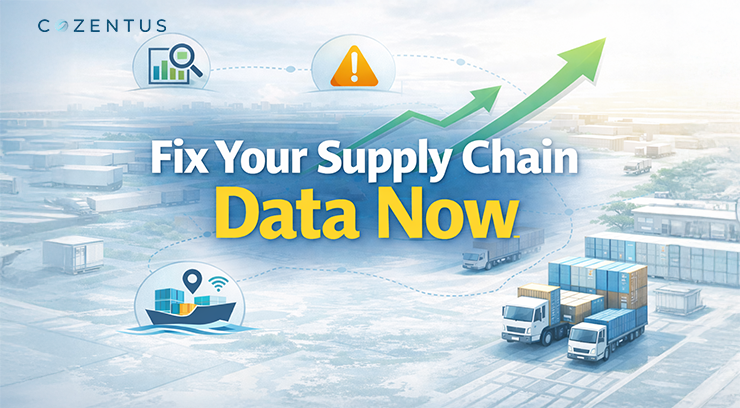Automated data movement is more vital in today's retail market than ever. Because of the increase in online shopping and the requirement for omnichannel retail, firms must be able to transport data rapidly and effectively to fulfil client expectations. Businesses may guarantee that data is always where it needs to be when it needs to be there by automating data mobility because of demand forecasting in supply chain management. It may also aid in increasing customer happiness, saving time and money, and increasing efficiency.
Editor’s Note:
There are several advantages to automating data transportation. The fact that it may assist in boosting customer satisfaction is the most crucial. Customers expect to be able to locate what they're seeking quickly and simply in today's fast-paced environment. If a company relies on human data transfer, data is more likely to be lost in the mix, and consumers will feel irritated. Businesses can ensure that information is always where it needs to be and that consumers can always find what they're searching for by automating data mobility.
Another significant advantage of automated data migration is that it may save time and money. Manual data migration is often sluggish and error-prone, resulting in missed sales and wasted time and resources. Let us examine the significance of automated data movement through artificial intelligence for supply chain & demand forecasting in supply chain management in today's omnichannel retail.
The Value of Automated Data Movement in Today's Omni-Channel Retail
The retail sector, whether brick-and-mortar shops, gadget stores, or other product merchants, is constantly changing as fierce competition grows. With artificial intelligence for supply chain disruptions and changing consumer behaviour, merchants recognise that adjusting and reacting to difficulties is difficult. It is a well-known reality that merchants must be strategic to succeed in competitive environments. It starts with improving consumer experiences, demand forecasting in supply chain management, and, critically, implementing an omnichannel retail strategy.
India is now undergoing this transformation, with the country's e-commerce business expected to be worth USD 188 billion by 2025, up from USD 46.2 billion in 2025. However, for enterprises to create value, some difficulties must be overcome.
Poor Visibility disrupts operations
Businesses know that one of their most difficult difficulties is achieving data visibility across their business processes and demand forecasting in supply chain management. If the correct data cannot retrieve, it may be time-consuming for organisations that manage consumer returns.
Visibility of data is essential to addressing the reverse logistics challenge. With the right technology, businesses can save and access better and more accurate data for their reverse logistics operations. It improves the quality of insights, data security, and governance, boosting compliance standards.
Solution for automated data movement
Retailers must have the necessary technology to keep up with these developments and capitalise on these new possibilities. An automated data migration solution is one of the most critical technologies for businesses today.
A completely automated data transfer method might benefit online retailers in various ways. One potential advantage is ensuring the appropriate information reaches the right people at the right time. It is essential for companies that must control inventory levels across several sales channels.
Furthermore, an automated data migration solution may assist in increasing data accuracy. It is significant because reliable data requires intelligent business choices using artificial intelligence for supply chain. Finally, an automated data transfer solution may help increase data movement efficiency. It is crucial since it may aid in the overall success of the retail business.
There are several automatic data migration options available on the market today. Retailers must thoroughly analyse their alternatives before deciding the best solution for their requirements.
Personalisation needs to be improved
Personalisation has never been more critical than now, as the epidemic has elevated consumer expectations. During the epidemic, Indian consumers increased their purchases of nutritional supplements and better food alternatives by 30%, partly due to social networks like chat groups. Furthermore, 60 to 70% claimed their shopping habits have shifted toward using chat groups. It is a vital sign that customisation is no longer a nice-to-have that complements the company but rather a must that may foster long-term connections and increase client retention.
Today's Indian customers value being understood personally, and companies seize the chance to use omnichannel personalised advertising. It, however, is a very new kettle of fish, requiring firms to acquire massive amounts of client data. The consumer journey generates several touchpoints. Although the moment of purchase confirmation is the ultimate aim, it is no more significant than the remainder of the customer experience. Businesses must adopt a comprehensive approach.
An efficient omnichannel personalisation strategy seeks to strike the right balance and make the necessary modifications depending on the data. Unifying data across several channels gives organisations real-time insights that improve decision-making speed and accuracy.
Potential growth boosts by data visibility for omnichannel
Enhancing omnichannel visibility for retailers creates a resilient transformation that benefits both the company and the consumer. Businesses must embrace technology that enables a more efficient and timely omnichannel operation. In today's fast-paced Market, data-driven retail tactics allow firms to assist consumers at every point of their purchase experience, whether online or in-store. It will set them apart from the competitors and make them the customer's preferred pick.
Bottom Line
In today's fast-paced retail environment, having a simplified data migration procedure is more crucial than ever. Customers are connecting with businesses in more ways than ever before. Therefore, merchants must be able to transmit data across systems quickly and effectively to create a consistent consumer experience. The key to reaching this aim is automated data transfer.
There are many main reasons why automated data migration is critical in retail. It, for example, aids in ensuring that client data is constantly correct and up to date. Retailers can ensure that client information is sent correctly and timely using automated data movement, which is crucial for offering a great customer experience.
Recent Post
Subscribe to our newsletter
Stay updated on latest trends and news in the supply chain and logistics industry
Join our mailing list for monthly updates
Download Reports
AI-Powered Intelligent Document Processing -Your Launchpad to Digital Transformation
Download






